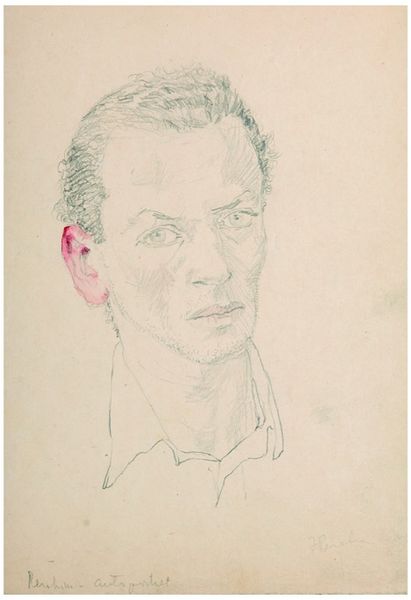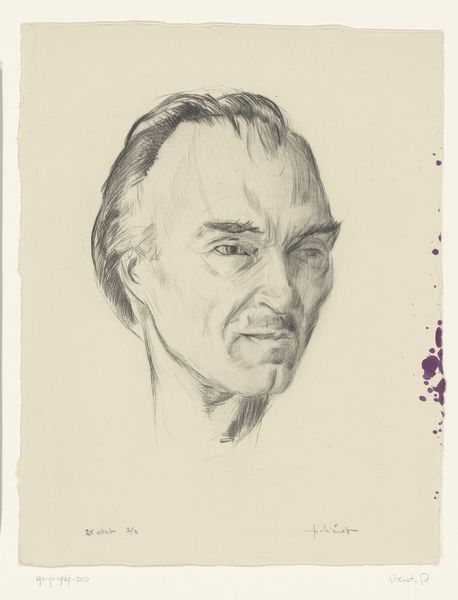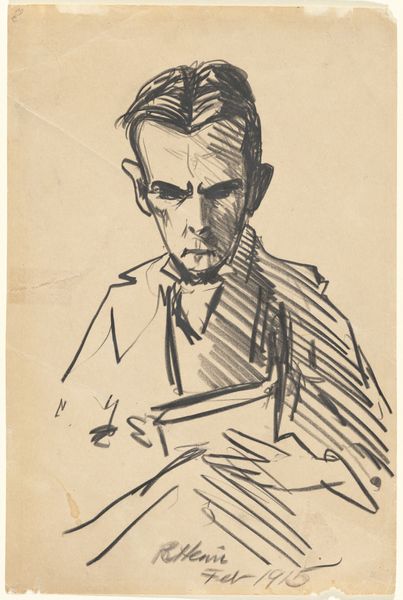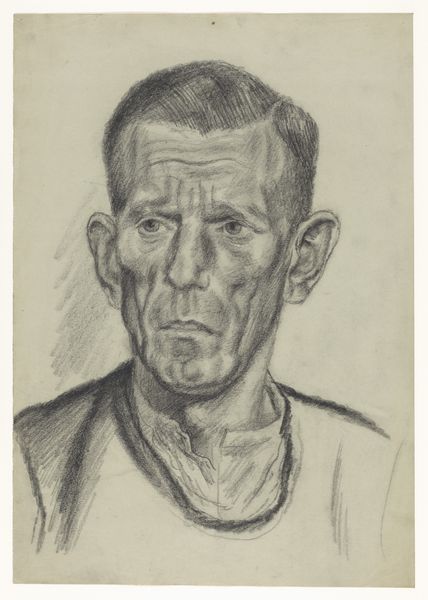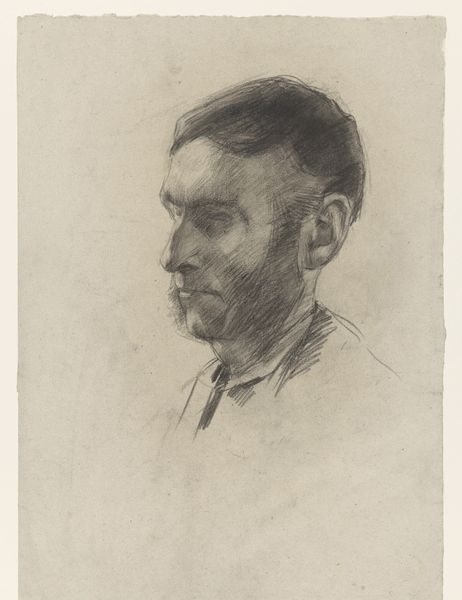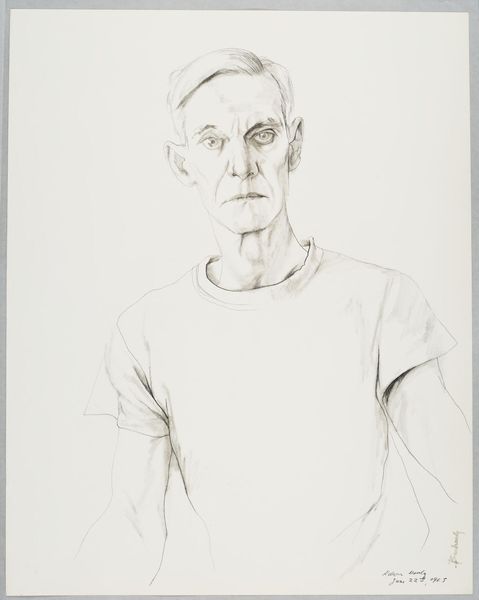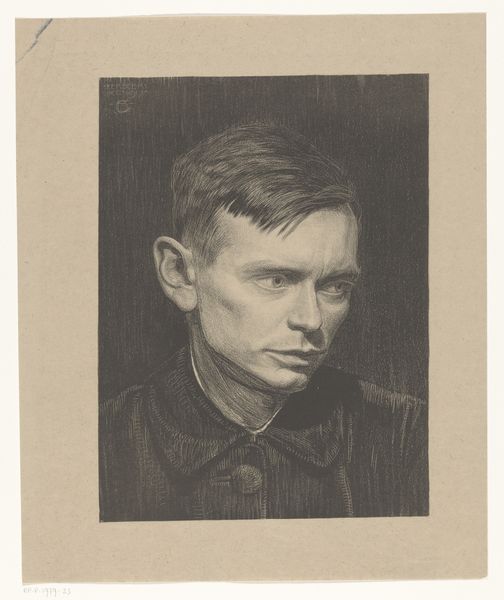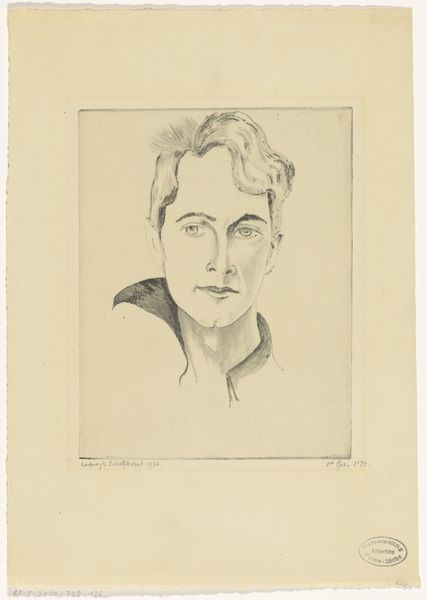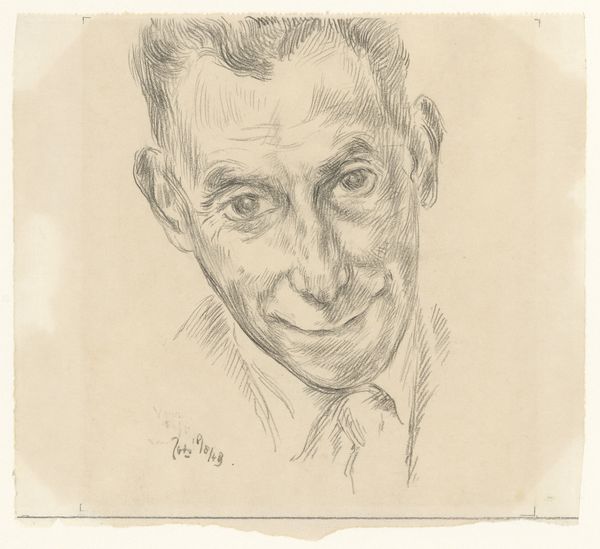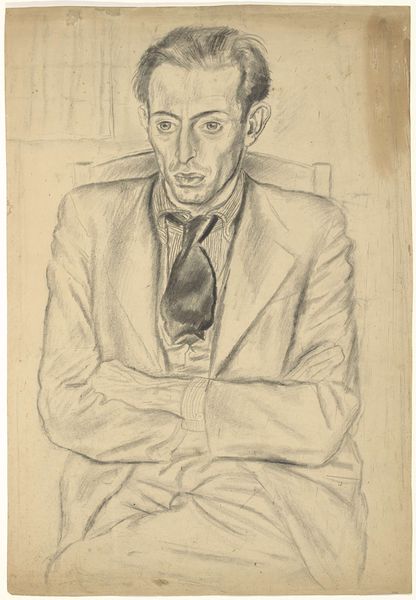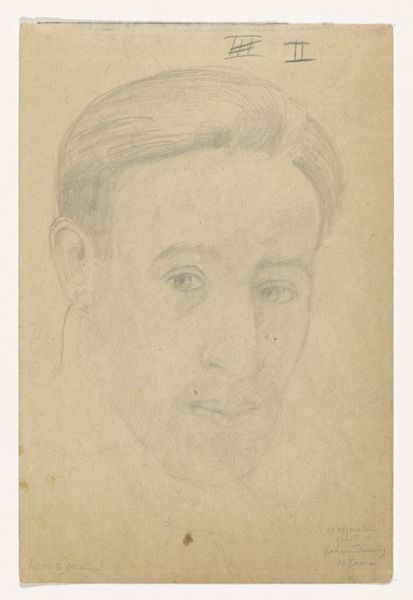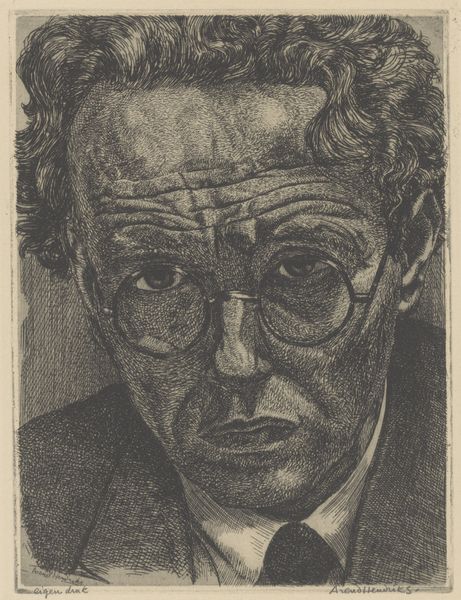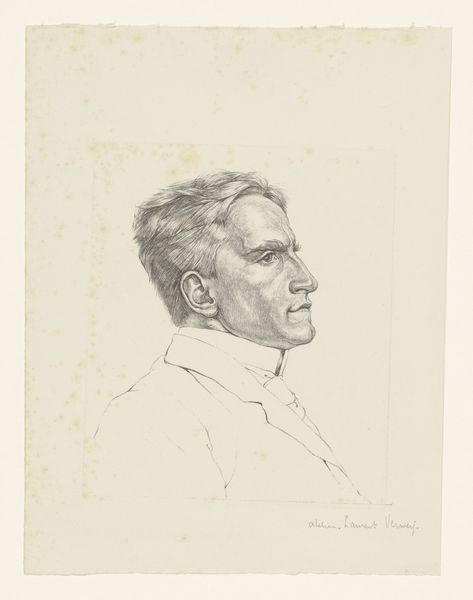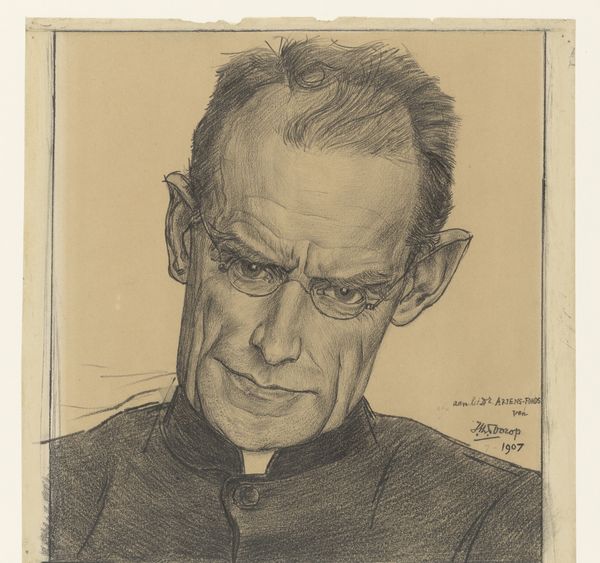
drawing, graphite
#
portrait
#
drawing
#
facial expression drawing
#
pencil sketch
#
caricature
#
pencil drawing
#
graphite
#
portrait drawing
#
facial study
#
portrait art
#
modernism
#
realism
Dimensions: height 635 mm, width 498 mm
Copyright: Rijks Museum: Open Domain
Curator: Looking at this intense, almost haunting portrait in graphite, what strikes you first? Editor: Well, beyond the undeniable skill, there's a certain melancholic air. The figure seems caught between introspection and resignation. Let's hear some background. Curator: This piece, dating back to 1935, is called "Portret van een onbekende man," or Portrait of an Unknown Man. The artist is Henk Henriët. It is held here at the Rijksmuseum. Editor: Henriët clearly utilizes graphite to marvelous effect here, particularly in the stark delineation of light and shadow to construct a sense of raw emotion. Curator: Absolutely. It’s important to remember the 1930s were marked by economic hardship and rising political tension. Graphite as a medium was relatively inexpensive, accessible, which connects with Realist impulses and often represents the lives of ordinary working people rather than romantic or idealized subjects. Editor: While the societal conditions add context, one must appreciate the technique independently. Henriët captures the vulnerability of the subject masterfully. It's visible in his brow and the slight downturn of the mouth, created with precise control over value, isn't it? Curator: Undoubtedly. Look closely at the construction of the shirt – a rather plain garment – suggesting this is perhaps someone from a more working-class background or an intellectual perhaps opting for function over form, in keeping with the ethos of Modernism that shuns artifice. Editor: That very shirt and collar is quite well studied. I note how economical yet suggestive the strokes become as they move away from the focal point: the face, the seat of expression. It's an interesting contrast of precision and elision that draws one's eye back to the man's features, wouldn’t you say? Curator: It invites speculation on who this man was and his position. Was he affected by global economic forces, and, by depicting an ordinary figure, perhaps Henriët intended to dignify or monumentalize a man rendered nearly invisible? The very nature of portraiture and visibility connects directly to the economics of power. Editor: Hmm, that melancholic effect may simply originate in skillful tonal variation—the way that soft gradations of gray and near-black merge to establish volume. That sense of vulnerability may then emanate more from within the artwork's visual design itself. But, alas, the debate over origin is endless. Curator: It's been illuminating to view how this era of mass production meets personal expression, wouldn't you say? Editor: Agreed. Henriët offers an exercise in close looking—and feeling!
Comments
No comments
Be the first to comment and join the conversation on the ultimate creative platform.
